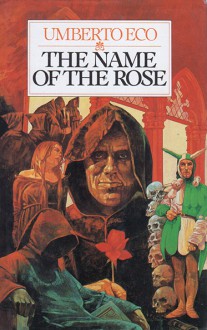Reviewed by Michael @ Knowledge Lost on
Baskerville is an intellectual and almost Sherlock in the way he analyses and comes to his conclusions; with his trusty sidekick, Watson… I mean Adso who is narrating this book many years later as a memoir, giving Umberto Eco the perfect chance to flood the novel with all his knowledge of Medieval Catholicism.
This book is heavy in explaining the medieval times and the fights between the different Catholic factions, as well as the sheer ease of convicting someone as a heretic. I loved Eco’s other novel Foucault's Pendulum because of the subject matter (conspiracies) but I think this book is an easier book to read, and if you are interested in learning about Medieval times and the Catholics back then, it is a good way to teach and entertain.
Reading updates
- Started reading
- 11 April, 2011: Finished reading
- 11 April, 2011: Reviewed
